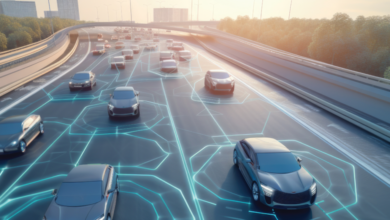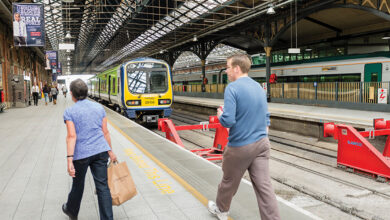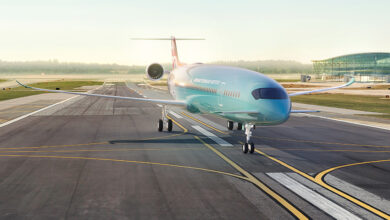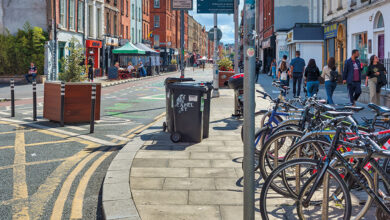The National Development Plan: A transport focus
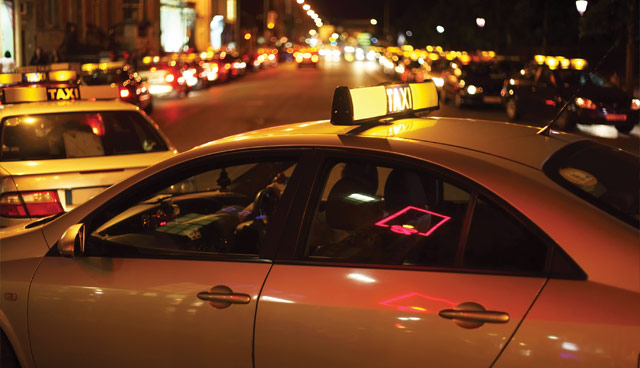

eolas outlines the transport priorities within the National Development Plan, a 10-year commitment to meeting Ireland’s infrastructure and investment needs.
Setting out the investment priorities that will underpin the implementation of the new National Planning Framework (NPF), the National Development Plan (NDP) indicates a commitment to resources of €116 billion over the next decade.
At its core, the NDP “builds on the analysis detailed in several major Government policy statements and sources”. These included a review of the existing Capital Plan, an infrastructure demand and capacity analysis and an IMF public investment management assessment.
Outlining transport as a priority area for future public capital investment, the infrastructure capacity and demand analysis highlighted the need for maintenance and upgrading of the road network and public transport to protect asset quality and value, meet demand forecast, ease congestion and to meet climate action objectives.
The NDP ensures that public capital investment is clearly aligned to the delivery of the 10 National Strategic Objectives (NSOs) detailed in the NPF and resource allocations reflect the investment priorities identified by departments during the review of the 2015 capital plan.
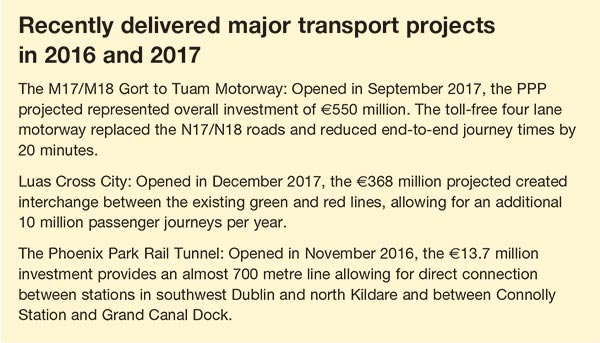
Figure 1 (below) highlights some of the transport-related indicative resource allocations for the delivery of NSOs and for named strategic investment priorities under each transport-related NSO.
National strategic outcomes
Enhanced regional accessibility
A key priority under the NPF is the enhancing and upgrading of accessibility between urban centres of population and their region. Under the NDP, the aim is to complete the road linkages between Dublin and most other urban areas and regions which have been progressing since 2000.
As well as a commitment to provide support and funding for the first part of the A5 project, recognising a previous neglect for the North West, another major objective is the linking of all regions and urban areas to each other. Delivery of the Atlantic Corridor, a road network linking Cork Limerick, Galway and Sligo is integral to this. As is investment in regional access to compliment investment and maintenance in local and regional routes throughout the country.
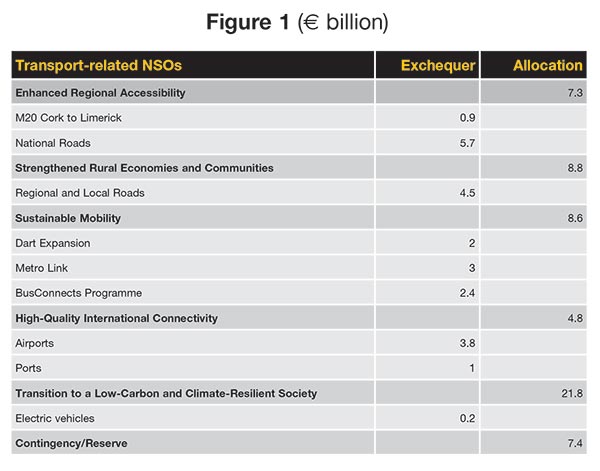
The NDP recognises “sensitivities” around tourism and environmental value and commits to, where major new alignments are neither feasible nor appropriate, targeting enhancements, such as addressing bottlenecks. Key roads projects will also connect with existing transport networks, facilitating the delivery of high-quality public transport in major urban centres.
Maintenance of current road networks is defined as an investment priority. ‘Steady state’ investment, guided by the Department of Transport, Tourism and Sport’s Strategic Investment Framework for Land Transport (SIFLT) analysis, also incorporates the cumulative effect of investment need not being met over the past decade.
On the inter urban rail network, the NDP sets out that “the funding priority for the inter-urban rail network is to protect the investment already made in our national railway system by funding maintenance and safety projects needed to maintain safety and service levels in railway operations”. Currently, work is underway to reintroduce 28 rail carriages by 2019 and the need for additional fleet for passenger service is being assessed prior to the delivery of new diesel electric trains expected in 2022.
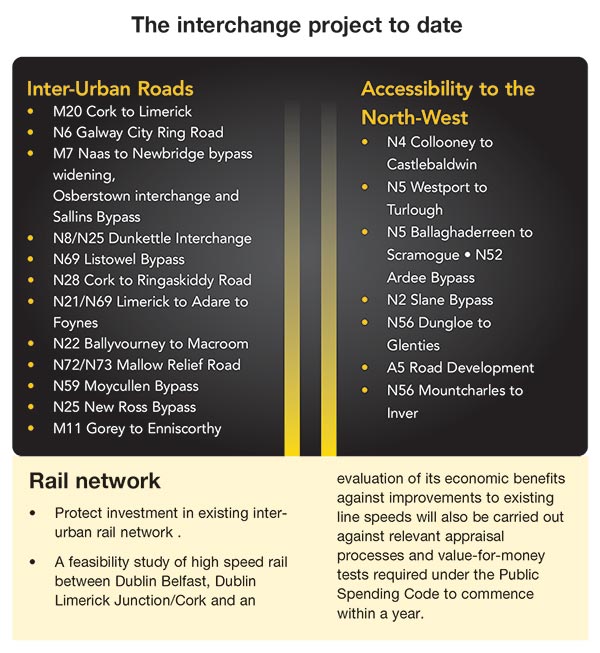
Enhancing regional connectivity, especially in an all-island context, is recognised for its potential to develop wider economic and societal benefits and so examinations will be carried out on a move to higher speeds for Dublin-Belfast, Dublin-Galway and Dublin-Limerick Junction/Cork.
Approval is also to be sought for extension to the Dunboyne/M3 Parkway line to Dunshauglin and Navan, the Western Rail Corridor Phase 2 from Athenry to Tuam and phase 3 to Claremorris.
The NDP states that various sections of the national road network will be progressed through pre-appraisal and early planning during 2018 to prioritise projects which are proceeding to construction in the Plan.
Strengthened Rural Economies and Communities
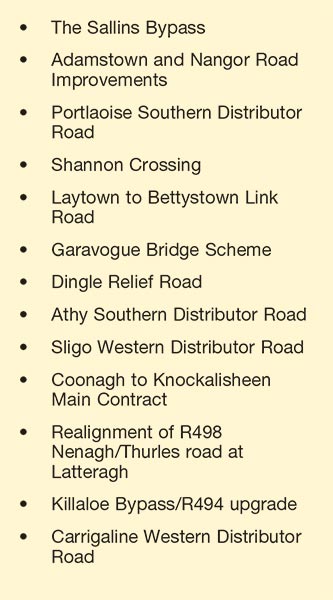
The NDP has assigned €4.5 billion to regional and local roads. The roads earmarked to be progressed over the next 10 years are:
In addition to these planned roads, local authorities are also planning to progress regional and local roads projects. As well as capital investment for public transport in rural communities, availability of operational funding support should also allow for new town bus services in large towns – including investment in fleet and road infrastructure.
Sustainable mobility
Environmentally sustainable public transport systems are a key theme of the NDP, aiming to meet “the significant increase in travel demand and urban congestion while also contributing to our national policy vision of a low-carbon economy”.
Sustainable transport projects will be delivered across the five cities of Dublin, Cork, Limerick, Galway and Waterford to tackle increased capacity and enable faster higher quality public transport. The NDP states: “These will include traffic management, bus priority and other smarter travel projects along with new urban cycling and walking routes to allow transport infrastructure to function more effectively and relieve congestion.”
Proposed delivery projects include:
- continued investment in bus and train fleets, as well as infrastructure;
- delivery of the full BusConnects programme for all of Ireland’s cities;
- transition to low emission buses, including electric buses, for the urban public bus fleet;
- complete construction of Metro Link;
- delivery of priority elements of the DART Expansion Programme;
- Park-and-Ride Programme: strategic park and ride sites plus investment in parking facilities at rail, Luas and bus locations;
- complete construction of the National Train Control Centre;
- delivery of comprehensive cycling and walking network for Ireland’s cities;
- supporting programmes of rail and bus station improvement/development;
- in line with the National Transport Authority’s Transport Strategy for the Greater Dublin Area 2016-2035, undertake appraisal, planning and design of LUAS network expansion to Bray, Finglas, Lucan, Poolbeg and a light rail corridor for Cork in the later stages of the period of the Cork Transport Strategy which is being finalised; and
- Provide additional charging infrastructure for targeted growth in electric vehicles.
High-quality international connectivity
Increased international connectivity is seen as an enabler of better competitiveness, trading performance and attracting foreign direct investment. As well as the major projects for Ireland’s airports and ports outlined below, there are also plans to support smaller regional airports through the Regional Airports Programme. While port projects will be supported through the strengthening of access routes via upgrades and enhancements.
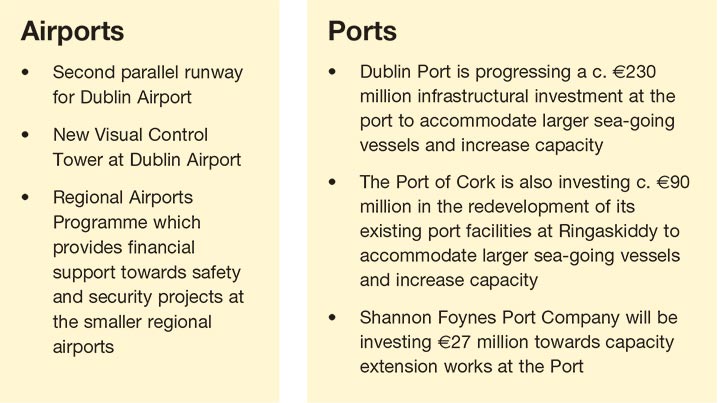
Transition to a low-carbon and climate-resilient society
The decarbonisation of transport, which accounts for 20 per cent of Ireland’s overall emissions, is a key theme of the sustainable mobility National Strategic Outcome. The NDP states: “The main actions planned to achieve this are securing an early transition to zero/low emission vehicles in the private and public fleets and setting targets for substantial progress in phasing out the internal combustion engine and replacing it with electric vehicles/other alternative fuels through schemes to incentivise low emission vehicles.” Specific targets include:
- at least 500,000 electric vehicles on the road by 2030 with additional charging infrastructure to cater for planned growth;
- no new non-zero emission vehicles to be sold in Ireland post 2030;
- transition to low emission, including electric buses, for the urban public bus fleet with no diesel only buses purchased from 1 July 2019;
- BusConnects Programme;
- no NCT Cert will be issued for non-zero emission cars post 2045;
- sustainable travel measures, including comprehensive cycling and walking network for metropolitan areas of Ireland’s cities, and expanded greenways; and
- comprehensive integrated public transport network for Ireland’s cities connecting more people to more places.

